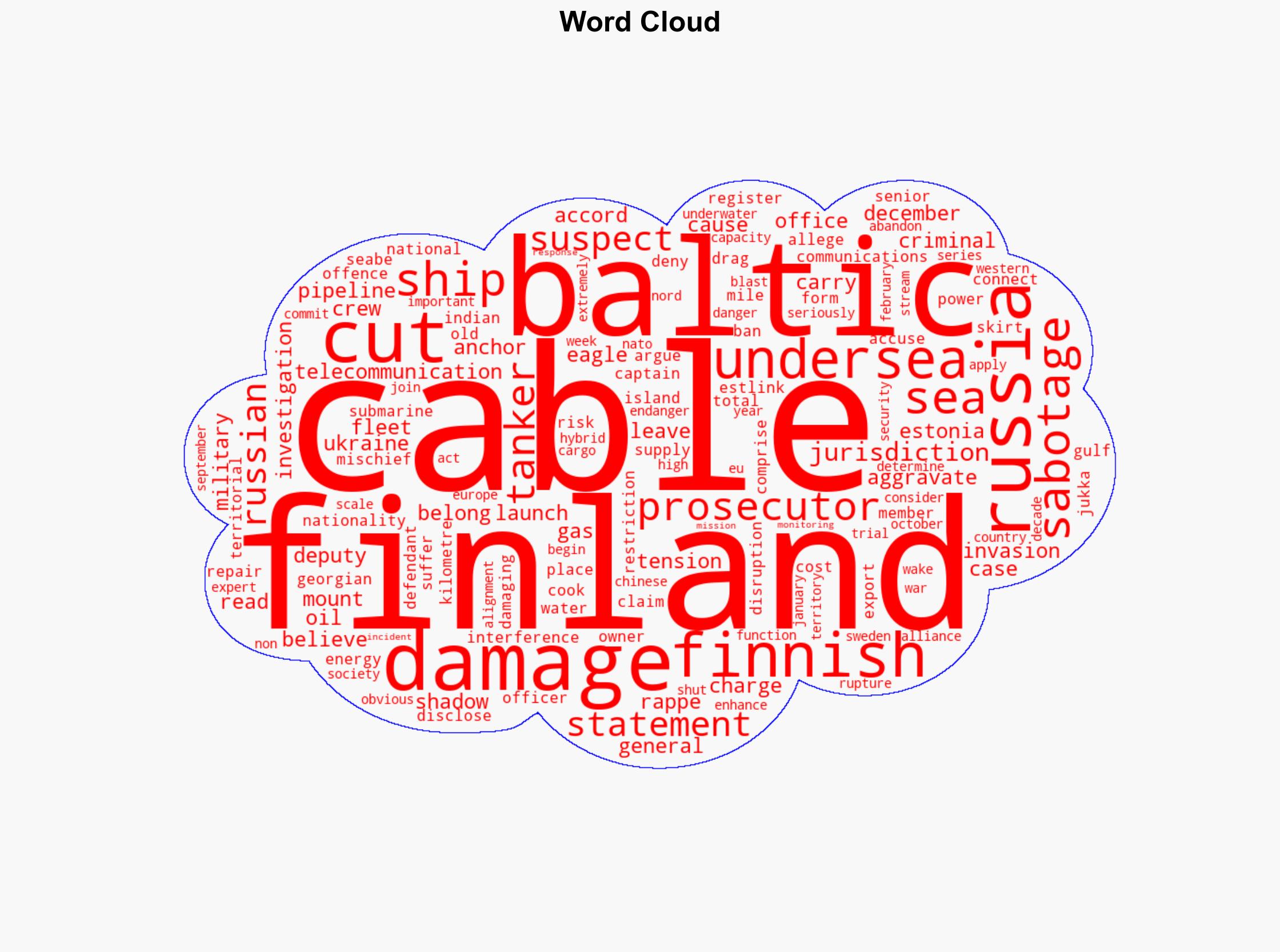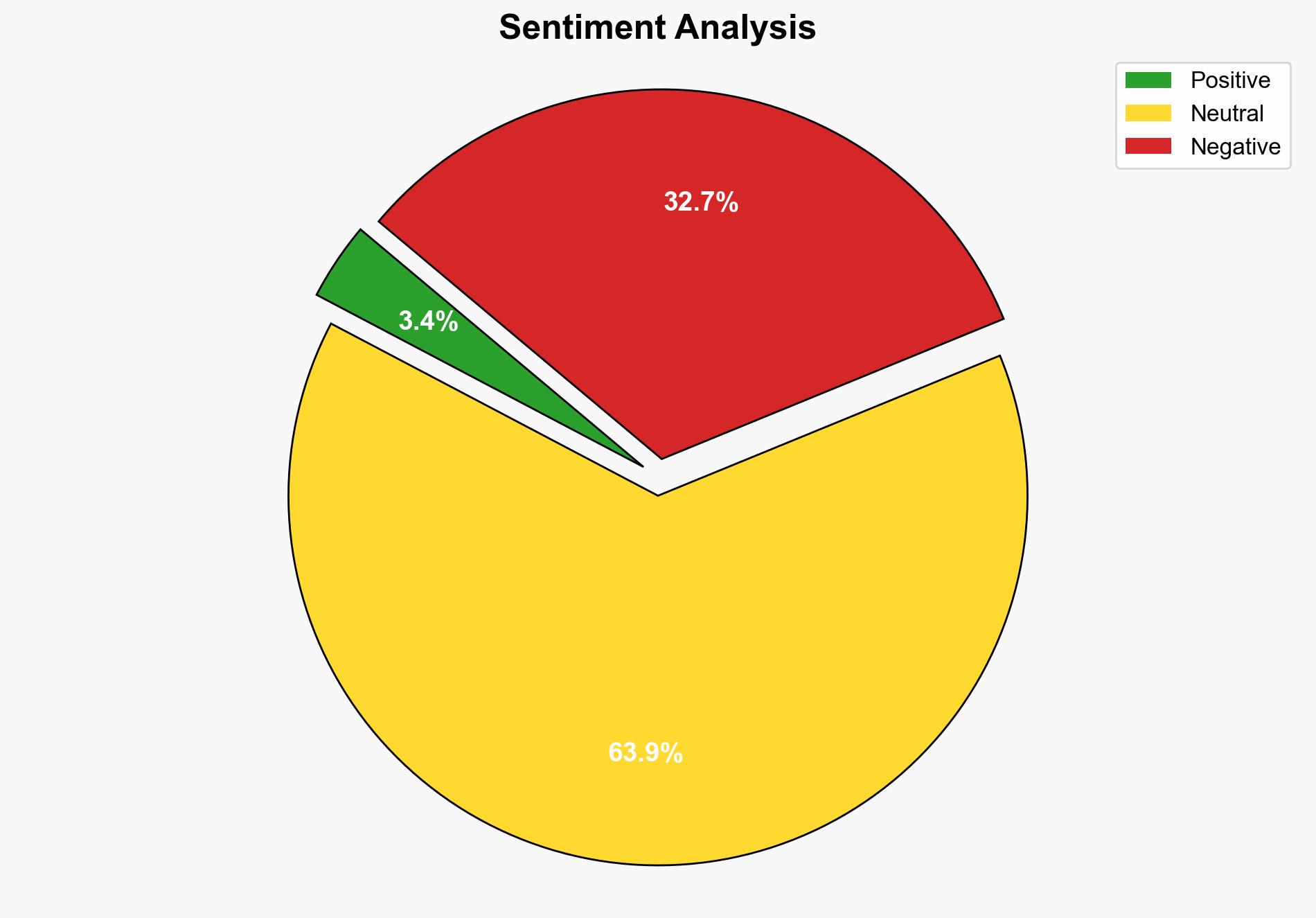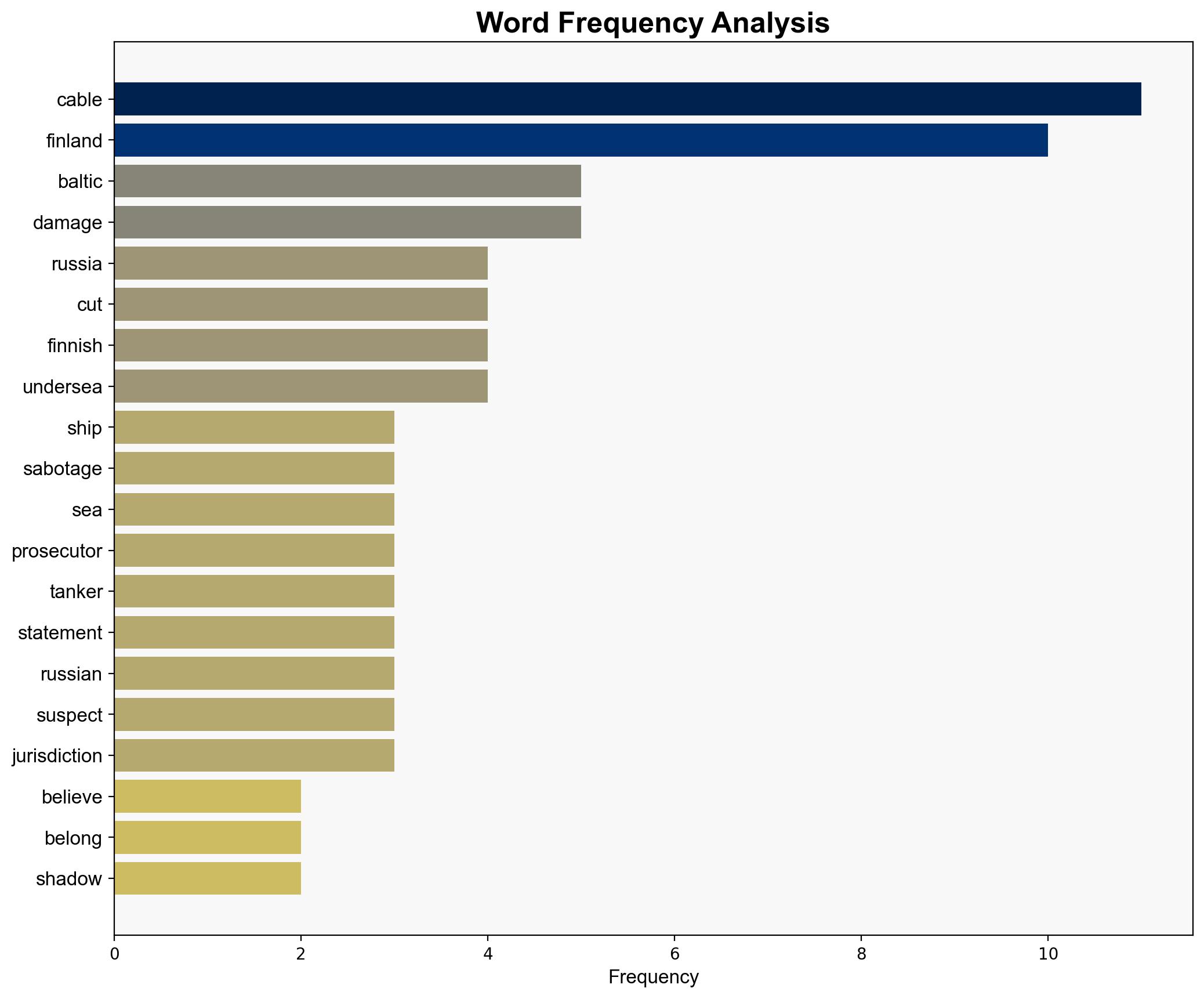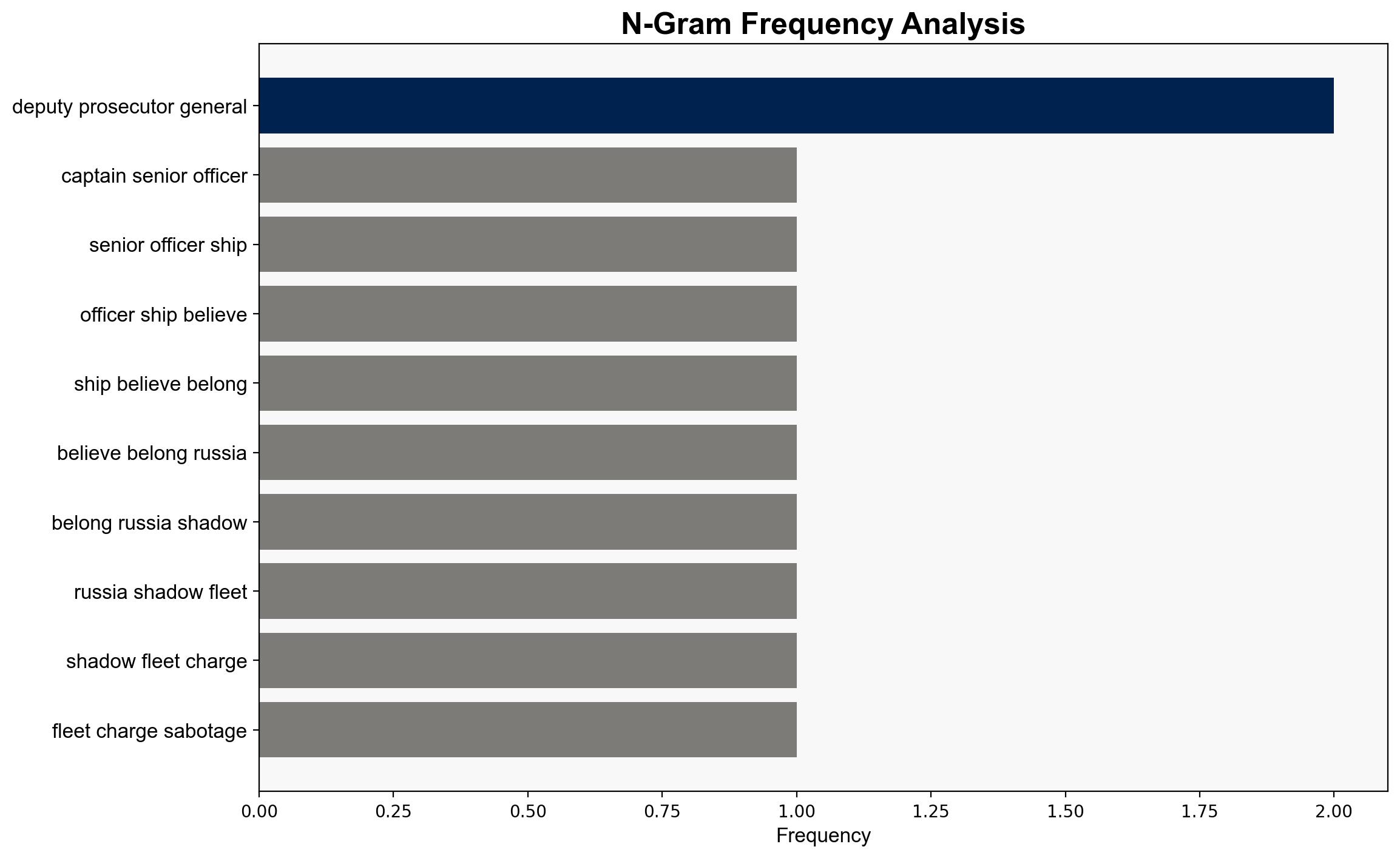Finland charges ship captain over Baltic cable sabotage – RTE
Published on: 2025-08-11
Intelligence Report: Finland charges ship captain over Baltic cable sabotage – RTE
1. BLUF (Bottom Line Up Front)
The most supported hypothesis suggests that the sabotage of the Baltic Sea cable was a deliberate act by a vessel associated with Russia’s shadow fleet, potentially as part of a broader strategy to disrupt Western infrastructure amid heightened tensions. Confidence in this hypothesis is moderate due to circumstantial evidence and geopolitical context. Recommended action includes enhancing monitoring of maritime activities in the Baltic Sea and strengthening international cooperation on undersea infrastructure security.
2. Competing Hypotheses
1. **Deliberate Sabotage by Russian Shadow Fleet**: The Russian-affiliated ship intentionally damaged the cable as part of a strategic effort to disrupt Western communication and energy infrastructure, leveraging hybrid warfare tactics.
2. **Accidental Damage by Negligence**: The damage was an unintended consequence of negligent navigation or anchoring by the crew, with no direct orders from Russian authorities to sabotage the cable.
Using ACH 2.0, the deliberate sabotage hypothesis is better supported by the pattern of similar incidents and the geopolitical context, though it lacks direct evidence linking orders to the Russian government.
3. Key Assumptions and Red Flags
– **Assumptions**: The deliberate sabotage hypothesis assumes the ship’s affiliation with Russia’s shadow fleet implies state-directed actions. The negligence hypothesis assumes no strategic intent behind the incident.
– **Red Flags**: Lack of direct evidence connecting the incident to Russian state actors. Potential bias in attributing intent based on geopolitical tensions.
– **Missing Data**: Detailed communication logs from the ship and any intelligence on direct orders from Russian authorities.
4. Implications and Strategic Risks
– **Patterns**: This incident fits a pattern of increased undersea infrastructure sabotage in the region, potentially indicating a broader campaign.
– **Cascading Threats**: Further disruptions could impact energy and communication security in Northern Europe, escalating regional tensions.
– **Geopolitical Risks**: Potential for increased NATO involvement and military presence in the Baltic Sea, heightening tensions with Russia.
5. Recommendations and Outlook
- Enhance maritime surveillance and intelligence-sharing among Baltic and NATO countries.
- Strengthen legal frameworks and capabilities for protecting undersea infrastructure.
- Scenario Projections:
- Best Case: Increased security measures deter further incidents, stabilizing regional tensions.
- Worst Case: Continued sabotage leads to significant energy and communication disruptions, prompting military escalation.
- Most Likely: Ongoing low-level incidents maintain pressure on regional security without major escalation.
6. Key Individuals and Entities
– **Jukka Rappe**: Deputy Prosecutor General of Finland, involved in the legal proceedings.
– **Eagle**: The oil tanker implicated in the incident, registered under the Cook Islands.
7. Thematic Tags
national security threats, cybersecurity, counter-terrorism, regional focus




